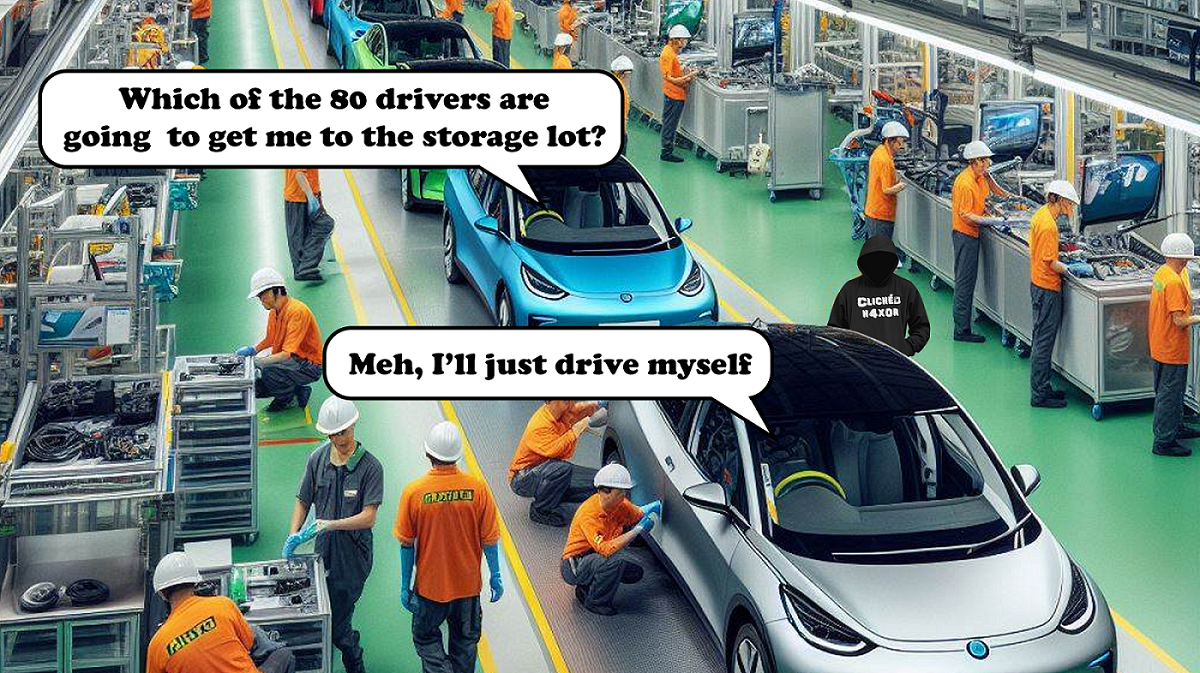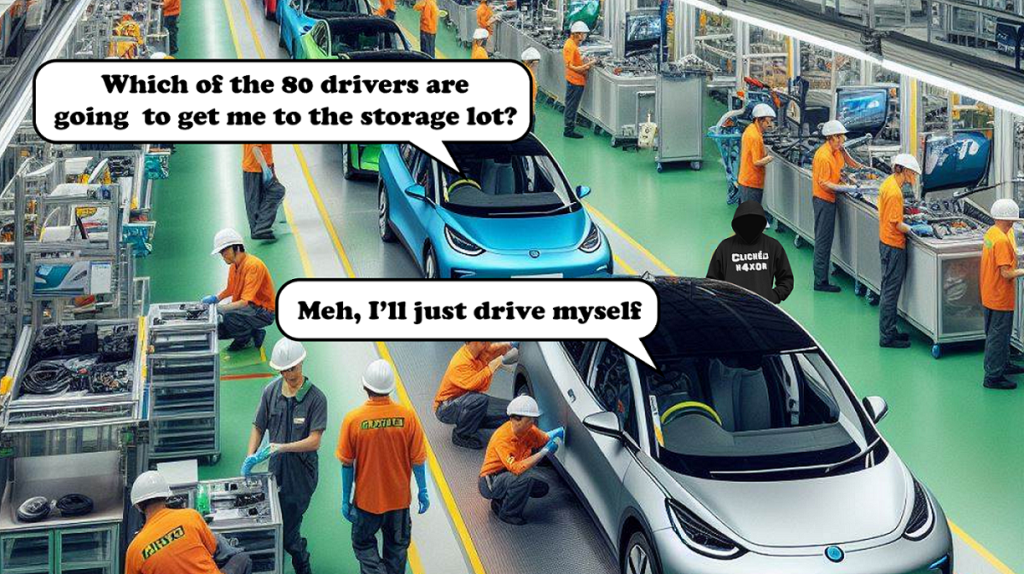

TL;DR
- The benefits of autonomous vehicles may not yet be for us consumers
- There are other areas where autonomy can benefit auto manufacturers and others
- Having your autonomous car drive you home from the bar may be some way off yet!
Car manufacturers and technology startups make a big play of autonomous vehicles being a huge consumer benefit. No longer will ‘risky’ human drivers be the cause of accidents through distraction by their phones, falling asleep at the wheel, or tailgating, for example.
But that’s not where the benefit lies, at least not in the short term whilst governments, software developers, and insurers figure out the legal responsibility for driving autonomous vehicles. Resolving the challenge around liability for an autonomous auto crash will take a huge effort.
In the meantime those benefits lie elsewhere, in places us consumer car drivers might not appreciate.
Vehicle transport
I used to sail up the Solent near Southampton in the UK. That’s where a lot of cars are loaded and unloaded to and from car transporter ships. I would watch in awe as a continuous stream of brand-new cars from UK manufacturers would be loaded from enormous parking lots.
Every few cars that went on, a minibus would drive the other way. It was taking the drivers back to the parking lot to get more cars, 15 or so at a time. Fleets of minibuses, dozens of drivers
Each car carrying ship might take as many as 8500 vehicles. It can take days to load and unload, taking up valuable ship time, but can of course be accelerated by increasing the number of drivers loading the cars.
Either option is expensive.
Autonomous loading of those cars brings a huge cost saving, both in terms of not needing drivers and accelerating loading of the ships through not needing to shuttle the drivers back in minibuses.
Legal complexity is reduced, as the vehicles are typically stored and driven through the port, avoiding public roads.
But there’s more
Those drivers are human. We make mistakes, we have bad days. Vehicle damage when loading is a problem. Why do you think new cars have foam strips fitted to their doors and protectors on their bumpers/fenders and wheels? Autonomy offers the opportunity to reduce damage.
Even better, damage often comes from opening and closing vehicle doors when in close proximity to each other. Vehicles need to be tightly packed to maximise load on board the ship. But those drivers need to get in and out of the car. Autonomous cars don’t need drivers getting in and out. Density of cars can be increased, reducing transport cost per vehicle.
It’s not just ships where there are benefits. When a new vehicle gets to the end of the production line, it will need to be started up and driven for the first time to a parking lot by the factory. That needs a driver per brand new vehicle and yet more minibuses bringing the driver back again.
Chatting to one auto manufacturer, one production line at one factory required 90 drivers just to keep the line moving and get those cars out to the parking lot. Millions of dollars per year just moving cars around from one production line.
Ford has announced projects to trial autonomous driving straight off the line. It’s a huge investment, but should generate a return remarkably quickly, given that teams of drivers would no longer be required.
It’s not plain sailing though. The cameras and sensors need to be calibrated per vehicle, so to date a few miles of driving have been required to adjust for the tiny differences between each car. That said, a few miles of carefully constructed private roads en route to the parking lot could be enough to deliver that calibration.
Even logistics firms involved in new car distribution can benefit. Loading cars on to transporter trucks takes time. Loading cars on to rail transporters takes time and people. All of these will be carried out on private roads where those autonomous vehicles aren’t exposed to the same complexity of the driving public where autonomous vehicles are mixed up with non-autonomous vehicles with varying standards of drivers behind the wheel.
Vehicle autonomy brings huge benefits, just perhaps not quite yet and not quite in the areas that us road drivers were expecting.
Cyber
The cyber security challenges are probably somewhat more manageable too, given the lack of public roads involved. That said, if an entire fleet of brand-new vehicles refuses to move as a result of a cyber related problem, there would be an expensive incident and potential for reputation-damaging press coverage. Removing vehicles from the production line that refused to drive autonomously could also result in a line stoppage.
It’s not the vehicles themselves that may be the problem. It’s more likely that IT infrastructure would be attacked, preventing vehicles from being configured and calibrated.
But these are potentially manageable issues, given the significant benefits to per-vehicle costs for consumers and margins for manufacturers.
Autonomy for the win, if not quite as we expected it, given the promises we were made that cars could drive us home from the pub safely after a few beers!






